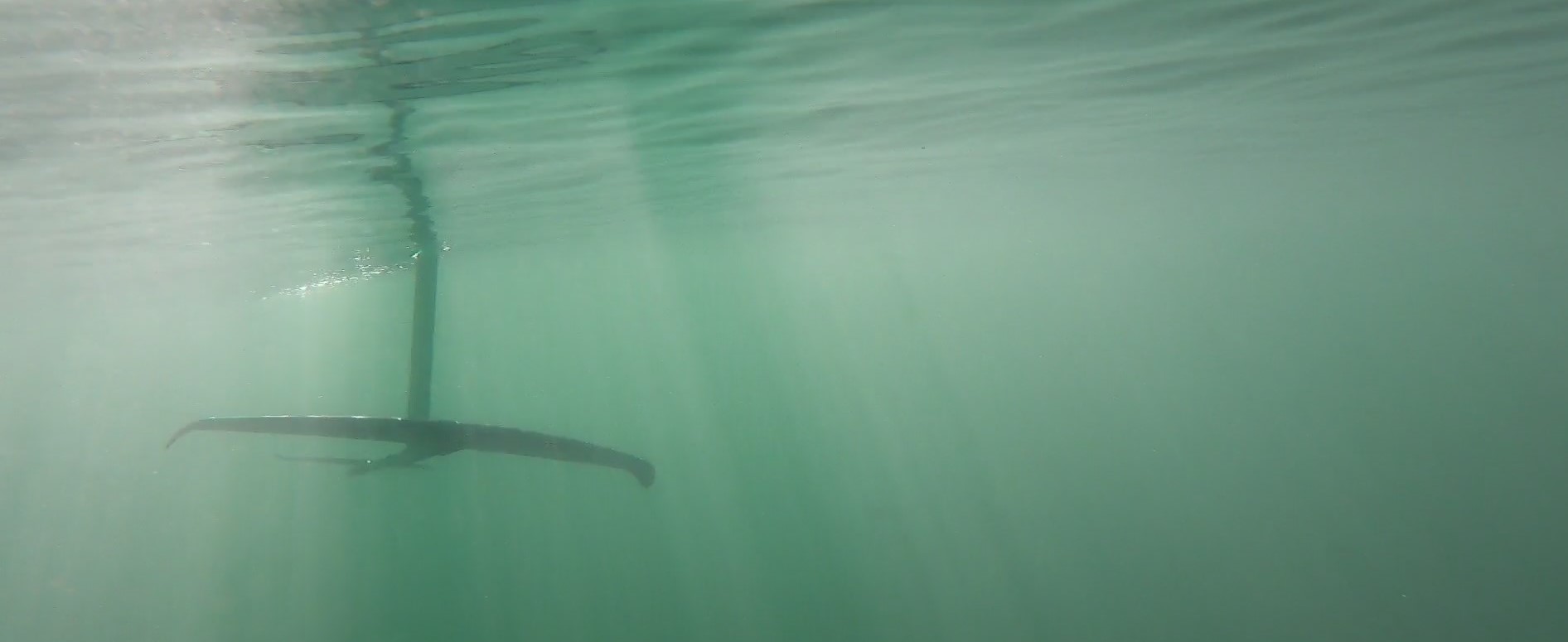Foiling – Flying over Water
Foiling – Something new?
If you google foil, you will find different definitions and translations. However, looking up foil in combination with sailing, surfing or boats in general, you will get to the following basic definition:
“A hydrofoil is a long and hydrodynamically designed fin with wings.”

Using foils to get into new spheres of speed is not something new. Hydrofoil on a vessel appears on a British patent granted in 1869 to Emmanuel Denis Farcot. Later on, Enrico Forlanini started to work in 1898 on hydrofoils to be used on propelled boats. The basic idea is to lift the hull out of the water to reduce the drag force on the hull, when being propelled through the water. In the most extreme configuration, the hull of the boat is completely lifted out of the water and only the foil remains inside the water.
If you google for “hydrofoil patents” you will find several patents for different applications of hydrofoils, e.g. US2856879A “Hydrofoil system for boats”, application filed in 1956 or US3747138A “Hydrofoil surfboards”, application filed in 1970.
In the course of time, there were more and more applications of hydrofoils and in 1970, Dave Keiper designed and built the world’s first hydrofoil sailing yacht, a 32-footer named Williwaw
In 2008, the French tri-foiler and former world record holder L’Hydroptère was the first sailing boat to break through the 50 knots barrier. Since, the development has not been stopped and the concept of hydrofoils is applied more and more.
There are different kinds of “foiling” – check out the sections about pumpfoiling, surffoiling and wingfoiling to get more insights.